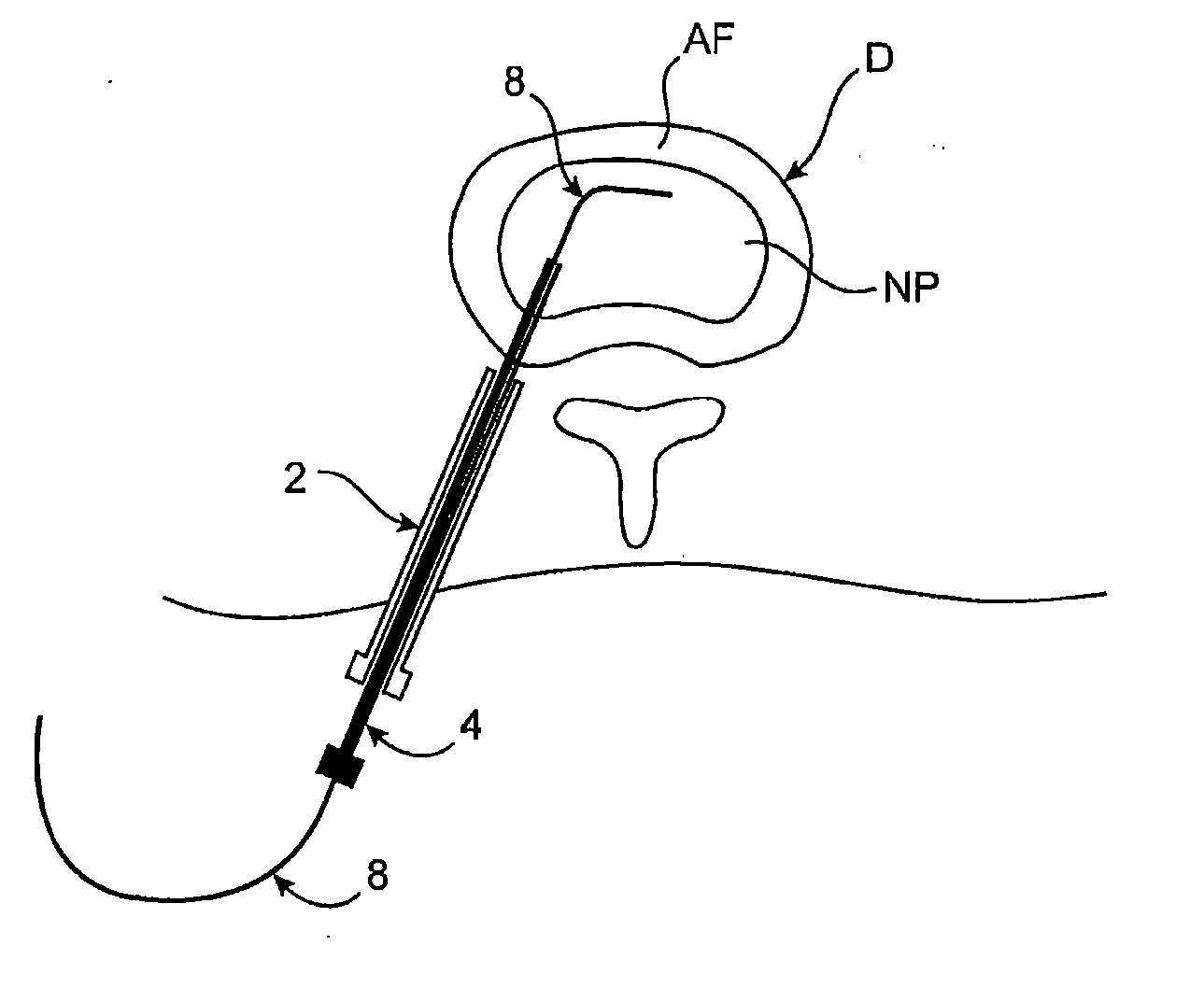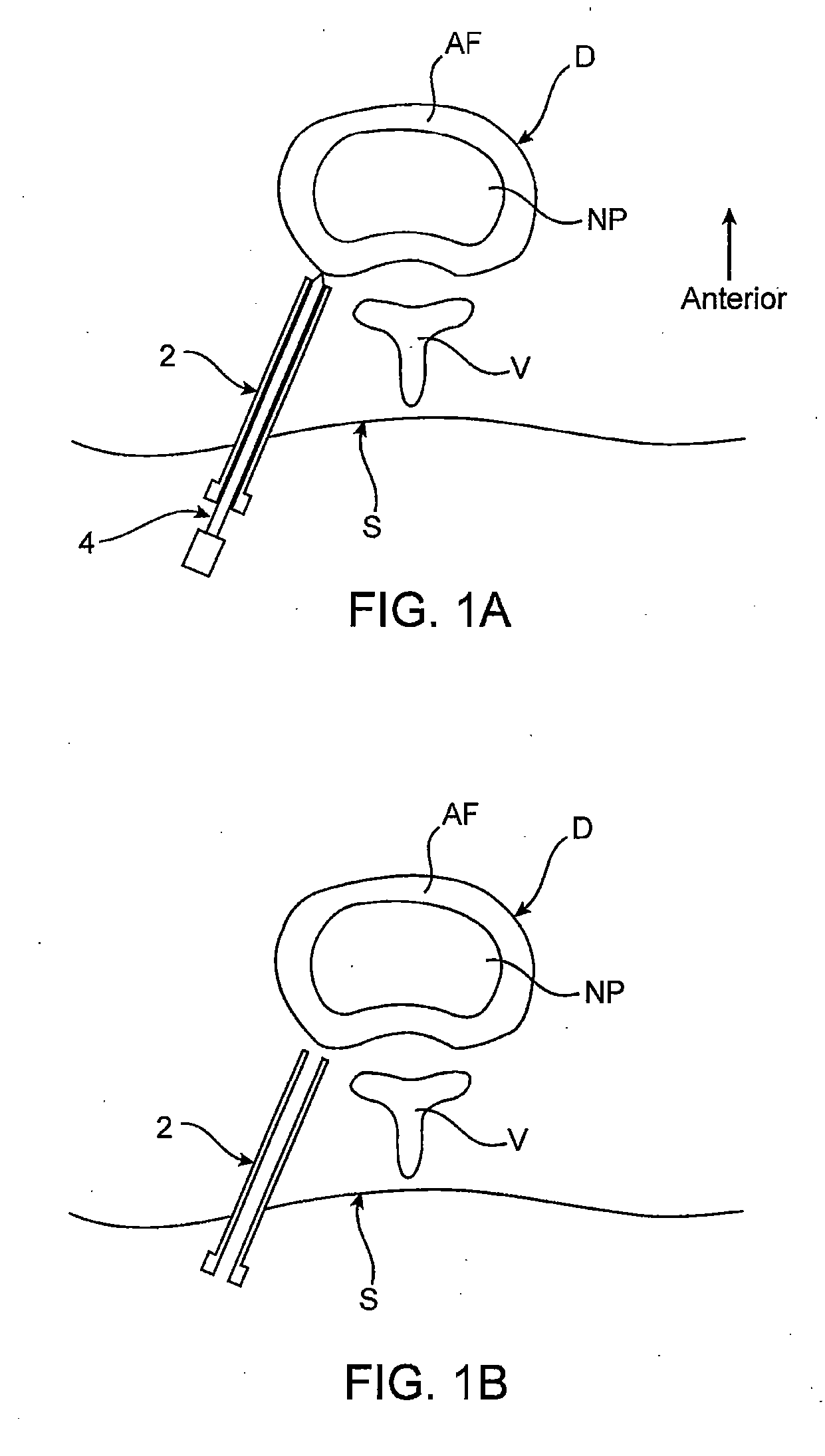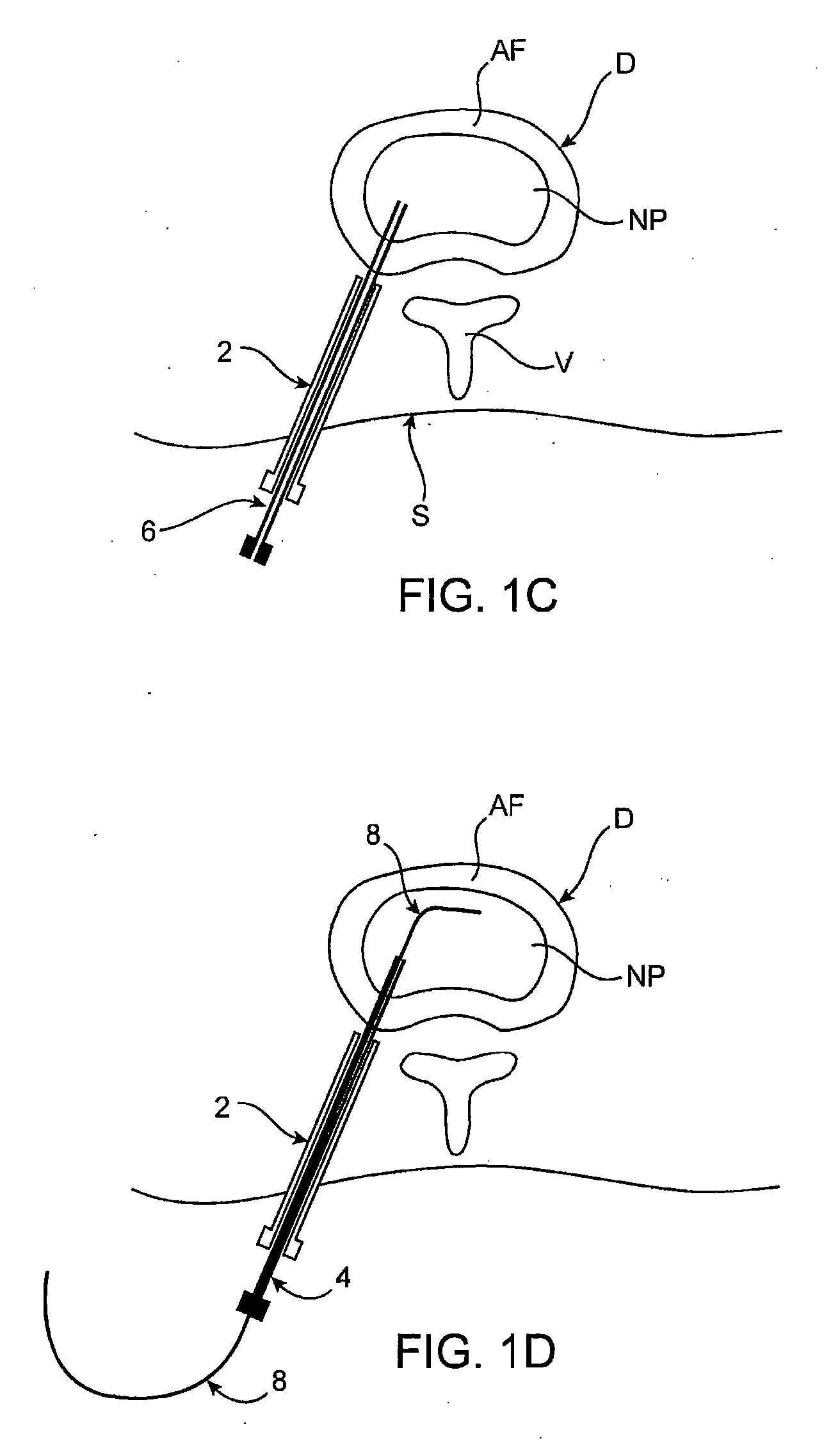Spinal diagnostic methods and apparatus
a diagnostic method and apparatus technology, applied in the field of spinal diagnostic methods, can solve problems such as back pain of patients, and achieve the effect of alleviating pain, facilitating diagnosis and in some cases treatment of discogenic pain
- Summary
- Abstract
- Description
- Claims
- Application Information
AI Technical Summary
Benefits of technology
Problems solved by technology
Method used
Image
Examples
Embodiment Construction
[0067] Methods, devices and systems of the present invention generally provide for introduction of one or more substances into an intervertebral disc to facilitate diagnosis and / or treatment of discogenic pain (i.e., back pain originating in one or more intervertebral discs). Methods, devices and systems may be used alone or in conjunction with other methods or devices that are currently known or hereafter developed, such as discography, radiological studies, physical examination and / or the like. In alternative embodiments, methods and devices of the invention may be used for purposes other than diagnosis or treatment, such as for study or experimental purposes or the like. Therefore, although the following description focuses on diagnostic and therapeutic applications, various embodiments may be used for any other suitable application.
[0068] Referring now to FIGS. 1A-1K, a method for introducing a substance into an intervertebral disc is illustrated schematically. As seen in FIG. ...
PUM
 Login to View More
Login to View More Abstract
Description
Claims
Application Information
 Login to View More
Login to View More - R&D
- Intellectual Property
- Life Sciences
- Materials
- Tech Scout
- Unparalleled Data Quality
- Higher Quality Content
- 60% Fewer Hallucinations
Browse by: Latest US Patents, China's latest patents, Technical Efficacy Thesaurus, Application Domain, Technology Topic, Popular Technical Reports.
© 2025 PatSnap. All rights reserved.Legal|Privacy policy|Modern Slavery Act Transparency Statement|Sitemap|About US| Contact US: help@patsnap.com



